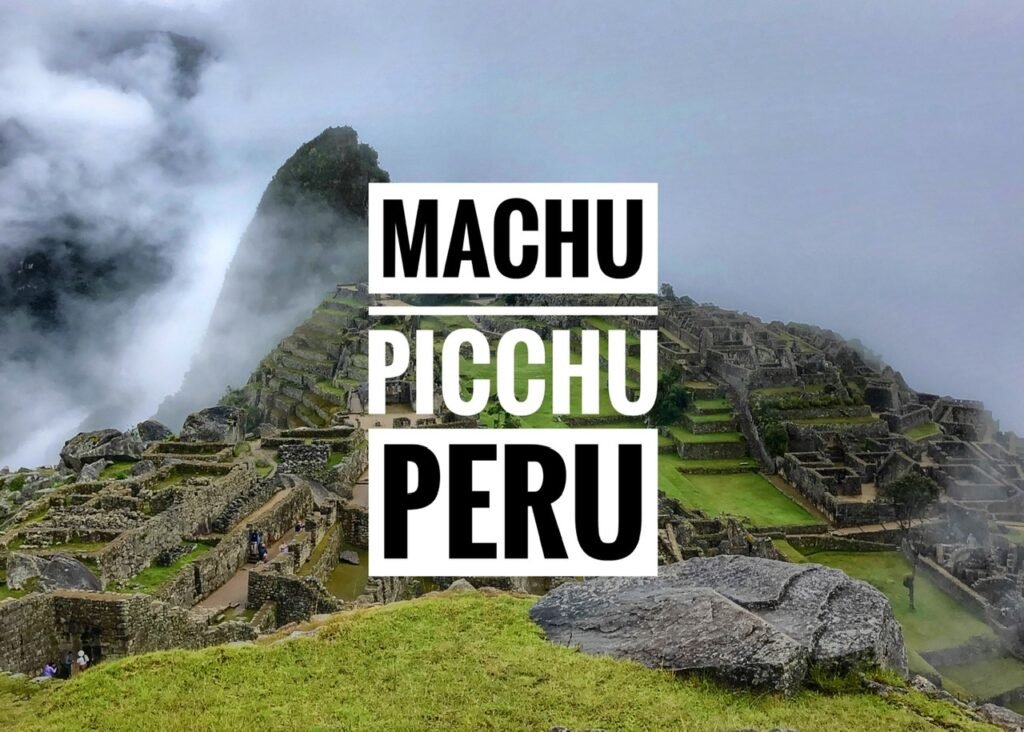
Well, we’d narrowly succeeded in dragging ourselves five days down the Salkantay Trek to Aguas Calientes, so now it was time for the Grand Finale…Machu Picchu herself. We’d both been waiting our whole lives for this! Of course, as we’d learned on the trek, nothing comes easy (without dropping buckets of dough) around these parts. But after navigating a ridiculous reservation system, being scolded for NOT bringing our physical passports, being scolded FOR bringing an umbrella, and sitting in the rain at 6 am for over an hour with a view that basically resembled pea soup, the sky blessedly opened for about 10 minutes and reminded us why we’d come all this way!!
Of course this site needs little introduction. Machu Picchu, built in a cloud forest around 1450 AD, is one of the seven wonders of the new world and splashes herself all over travel magazines, bucket lists and blogs. She hovers high in the Andes around 7000 feet (2100 meters) and is the most popular tourist attraction in South America.


The Entrance. Because of its status, we understand that rules and bureaucracy hurdles are in place to visit, but we’ve never seen anything like it at any world-class site. The Peru tourism board definitely does not make it easy to visit for the independent traveler.
Here was the the process just to get tickets:
1. Reserved tickets online. You have to choose between Circuits 1, 2, 3, or 4 and whether or not you want to pay more for add-ons like Huayna Picchu, which is climbing to the tops of the peaks. All these options are annoying, but easy right?
2. We then received an email (in Spanish) that our tickets are reserved and now we need to pay $81 (total) for tickets online or we would lose our reservation after five hours. We then tried five times to use credit cards. (Including different ones). Would not work.
3. Mandy goes to Bank of the Nation in Cusco to pay in person.
4. She stands in line 15 minutes and realizes she’s in the ATM line
5. Stood in bank line 25 minutes is then told she needs to have a print out of her reservation.
6. She goes to find a copy store to print the reservation. Another 20 minutes has passed.
7. Back in line at bank for 70 minutes
8. Finally she gets to the head of the line, shows her PHYSICAL passport and PAPER reservations and pays fee.
9. Now, we’re ready to go to Machu Picchu!
10. When we get to the entrance at MP for our designated 6 am time slot, they ask for our passports. We show them our digital copies which is standard procedure. For three minutes, we got a lecture (also in Spanish) on not having our physical passports when A. we already showed passports when paying for the tickets B. We have digital copies that match our tickets C. It did not say anywhere on the ticket or reservation to bring your passport and D. Greg had walked two hours in the pouring rain at 4 am to get there and Mandy had paid $25 for a bus. Who do they think they are? Immigration ?
11. Fortunately, after some pleading, (our first in español), they let us in, but did remind us that umbrellas are not allowed. Clearly those are weapons and they do not care how much it is raining.

Needless to say, after all this, we were more than a little perturbed when we got to the top of Circuit One to see the grand vista that everyone knows. Stunning right? ?

Apologies for all the ranting. It’s usually not our style, but we also don’t like to gloss over the reality of the situation.

While we look at the clouds, and get over that, we’ll share some facts about Machu Picchu. The name Machu Picchu means “Old Peak” in the native Quechua Language. (Worldwildlife.org)




Most cities built by the Inca civilization were destroyed by the Spanish conquest. Machu Picchu was in a hidden location—invisible from below—and not found, which is what made it one of the most well-preserved Incan cities and an archeological gem.
It wasn’t discovered by a non-local person until Yale Professor Hiram Bingham rediscovered it in 1911. He published his findings in a book called “The Lost City of the Incas” which soon launched Machu Picchu into a world tourism destination when the rail road was made and Aguas Calientes was established. (Side note: “Turn Right at Machu Picchu” is a great read before coming!)
Many theories exist about Machu Picchu’s purpose. Some archeologists think it was a royal estate and some a secret ceremonial center.

It has more than 150 buildings from baths to houses, to temples and sanctuaries.
The Incas were masters of agriculture and masonry. It is believed that no wheels or animals were used in the construction of this miraculous site and that men pushed the stones (often more than 50 lbs) up the crazy vertiginous mountain side. Makes our Salkantay Trek seem like a walk in the park. ?

At last the clouds begin to part and we witness those iconic peaks.
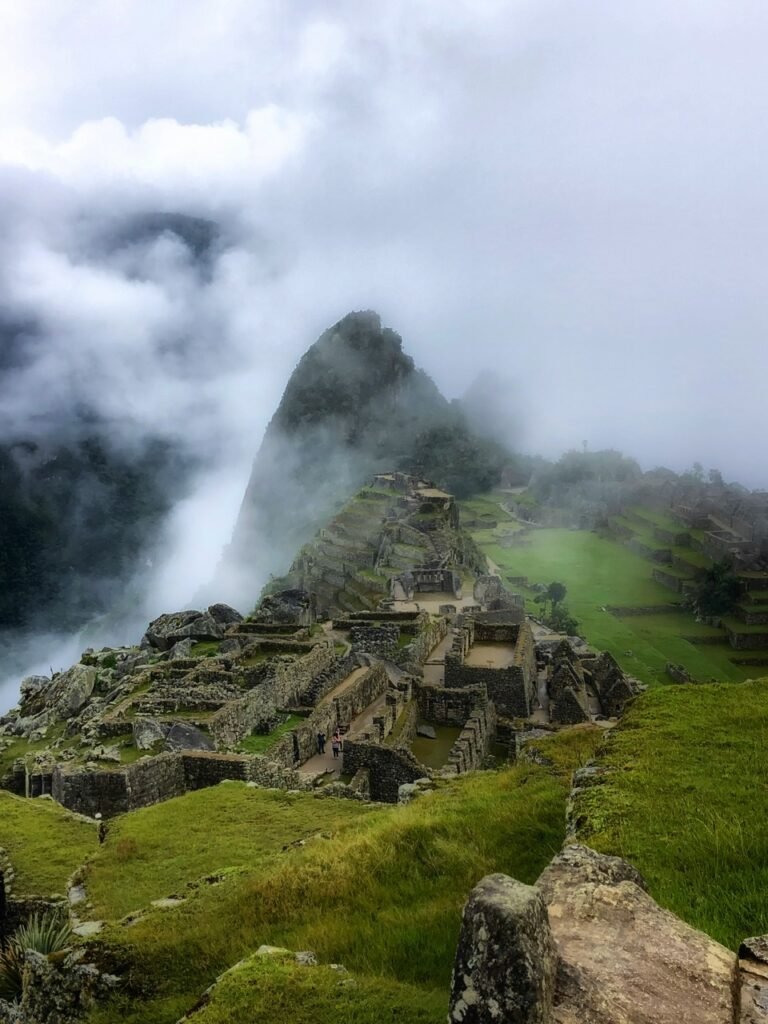
And over the next 10 minutes…

…it gets better and better! Whoohoo!!


And it even stopped raining! ?

After finally getting our view we were able to move on. (We couldn’t have moved on before because despite the lack of crowds, you were not allowed to backtrack on your circuit.) This was grounds for getting whistled at.
Next, we went down amongst the rows and rows of buildings. Each stone was astoundingly cut to precisely fit together so that no mortar was needed to keep the walls standing.



It’s quite mind blowing when you think about the lack of tools they had.

The construction is 75% original.

Walking amongst the site.

It’s simply astonishing how well preserved everything is.
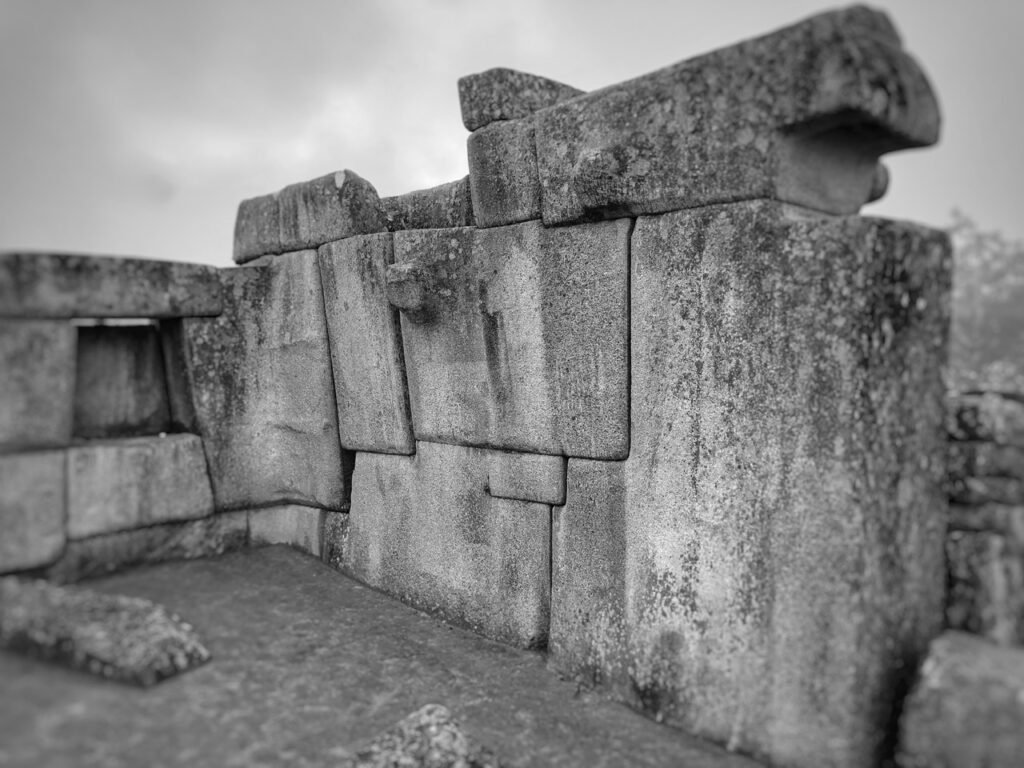
The notches on the stones are believed to be how the Incas pulled the rocks into place (using ropes.)

Every stone puzzles together like the a work of art. Truly, what a masterpiece?
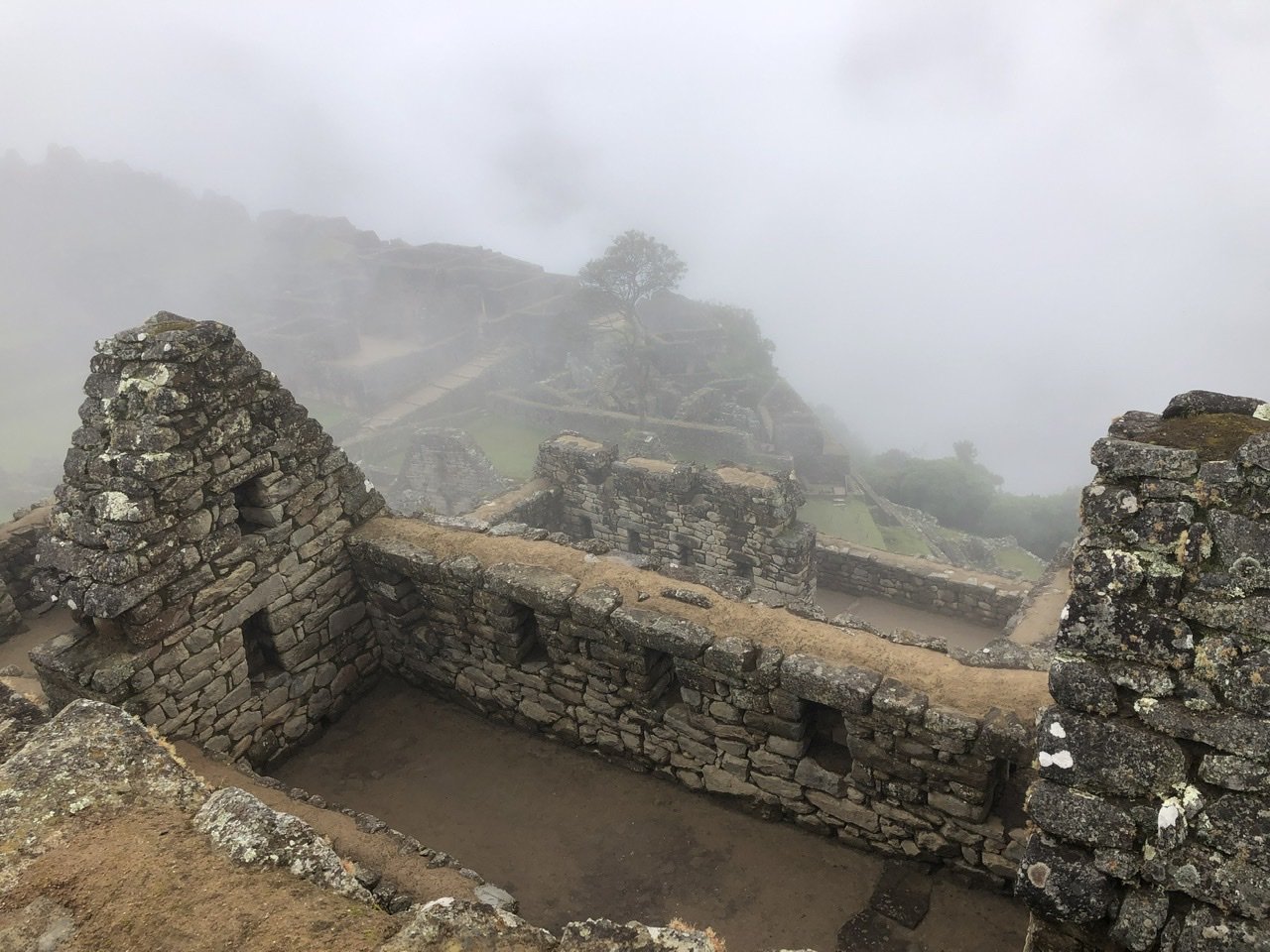


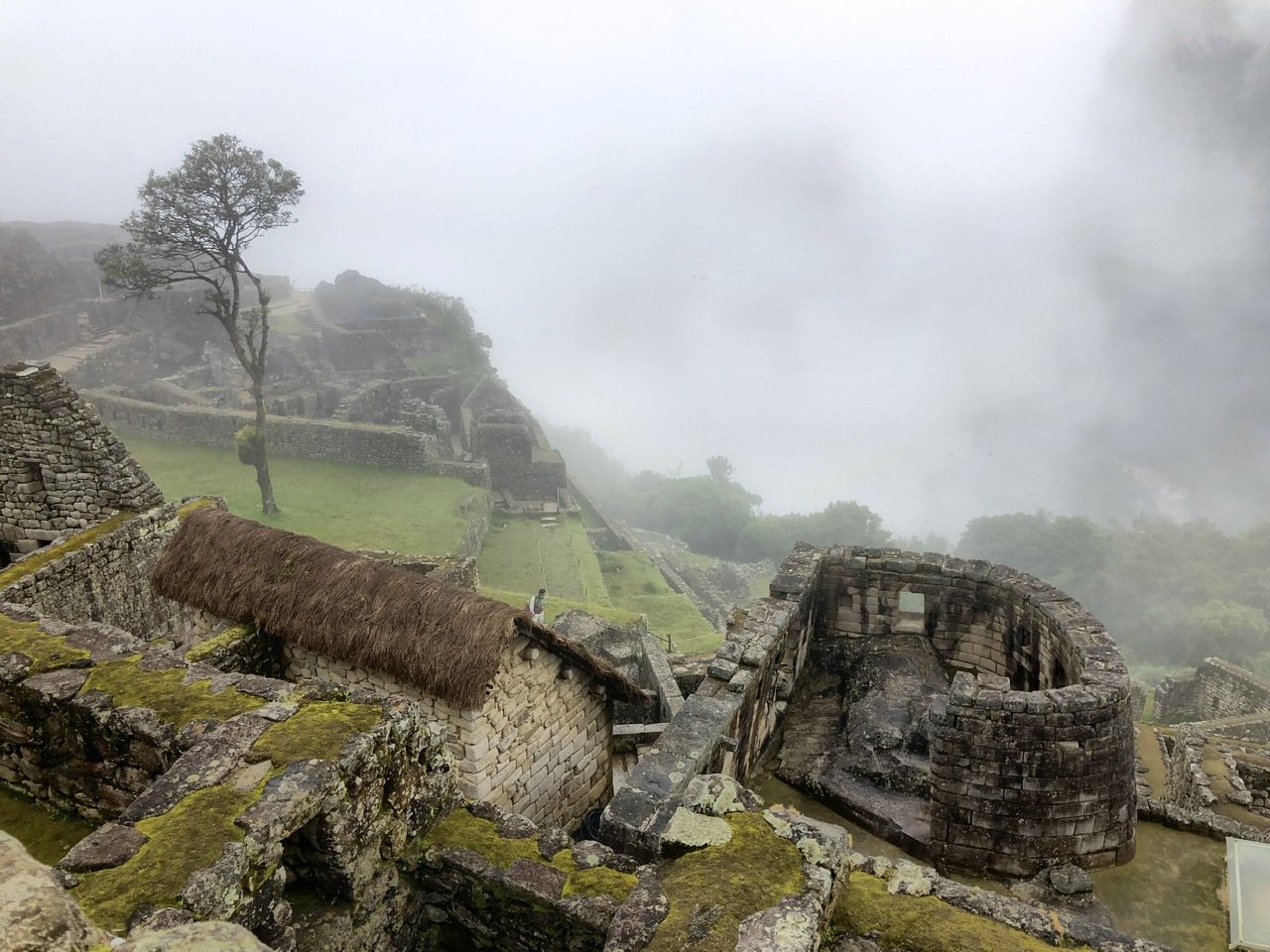


More stone photos.

Machu Picchu was also an astronomical observatory, and this sacred Intihuatana stone accurately indicates the two equinoxes. Twice a year, the sun sits directly over the stone creating no shadow.
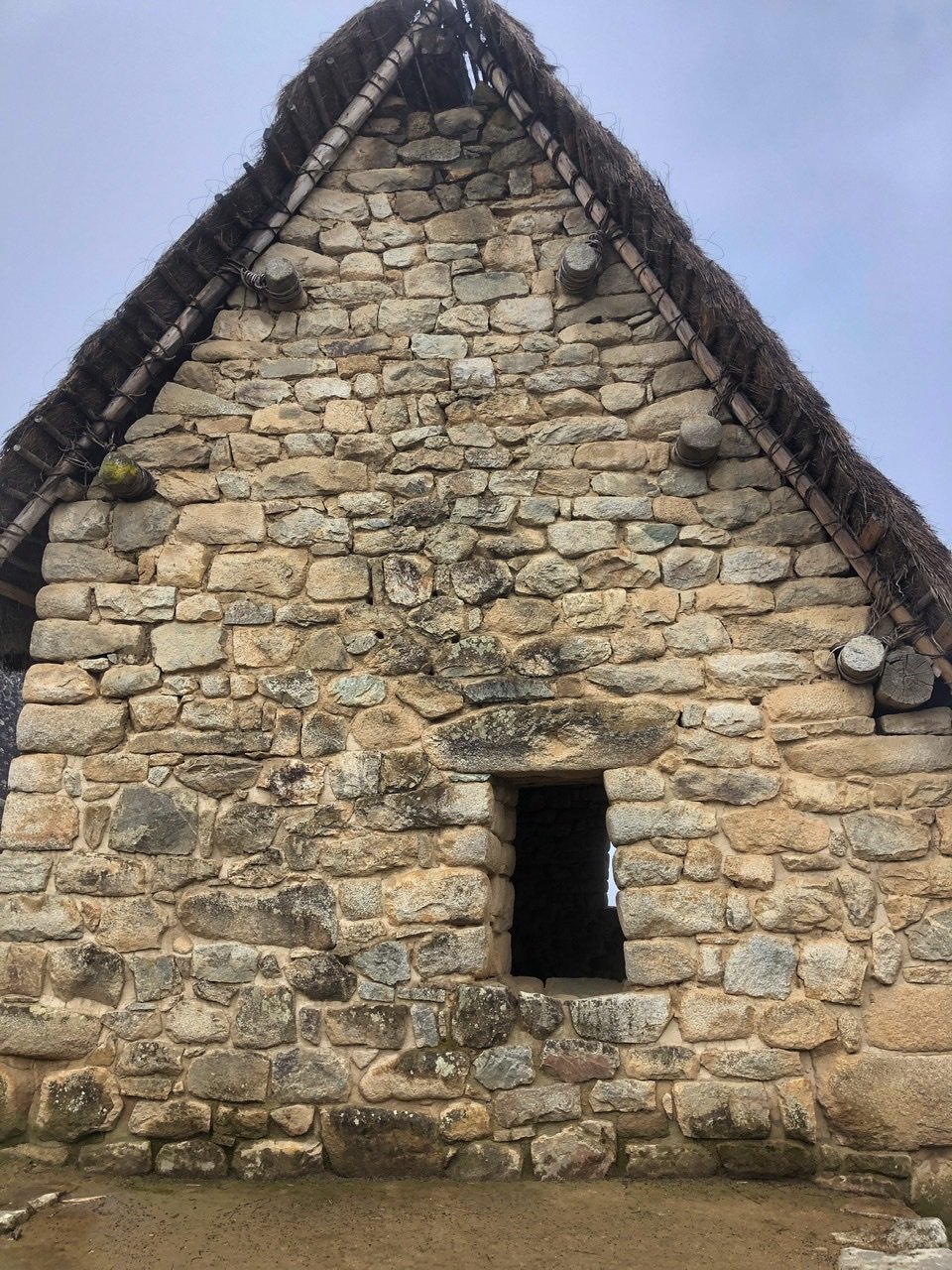

A reconstruction of one of the roofs made of thatch.

So many doors and windows!


Seriously unbelievable .

Mandy felt like a poncho-ed defeated Inca warrior that day.

And Greg wanted to play hike and seek.

The entire mountain sides were terraced for crops.



So after the Spanish conquest of Cusco, what happened to Machu Picchu?

Between 1537 – 1545, as the small Spanish army and its allies started to gain ground over the Inca Empire, the people abandoned Machu Picchu, fleeing to safer retreats. The residents took with them their most valuable belongings and destroyed Inca trails connecting Machu Picchu with the rest of the empire, which is why it wasn’t rediscovered until 1911 and remains largely intact today. (theonlyperuguide.com)

So despite our obstacles and the frustrations with the administration of the site, are we glad we went? Yes, undoubtedly! Machu Picchu is truly extraordinary to see in person (when you can see it ?)
That said, our personal opinion is we wouldn’t recommend going from December-March to anyone…especially if you want to trek in, which for us, was the only way both from a financial and spiritual standpoint. And in better circumstances, yes, it would have been well worth it. At least we beat the crowds which was our original motive! But for us, needless to say, we were ready to check it off “the list” and call it a day….

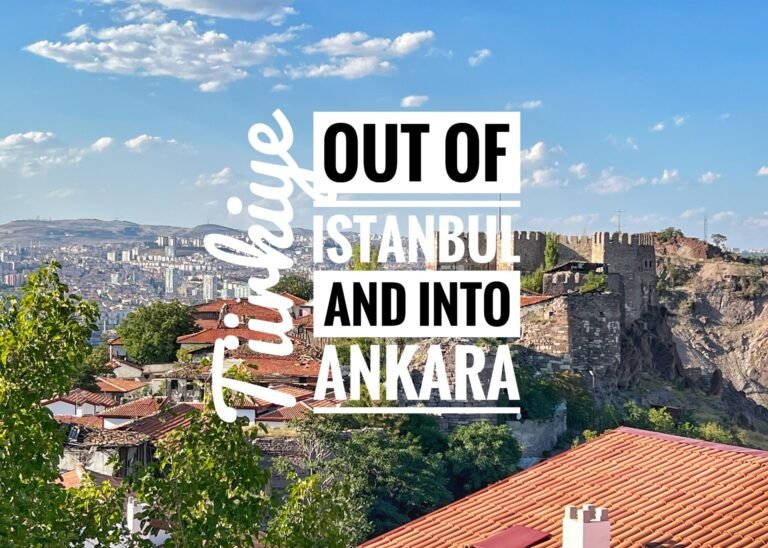
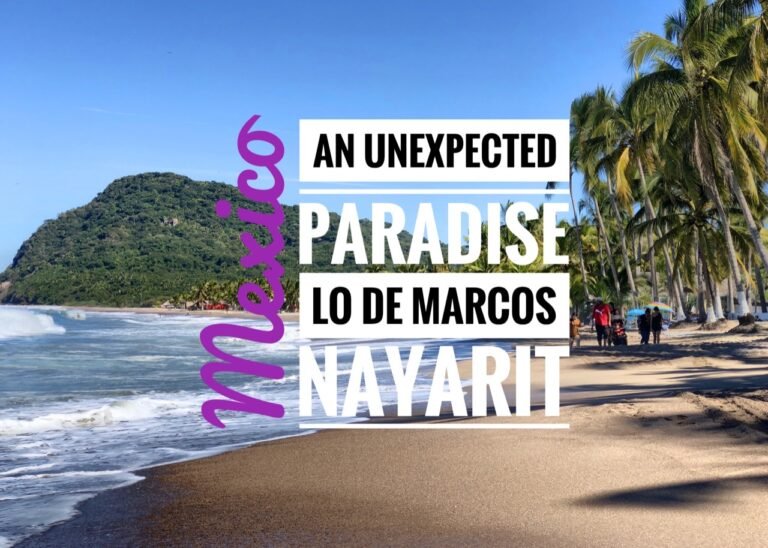

As usual great story telling and awesome pictures!! Safe travels!!
Thanks so much for reading Greg:) Great to hear from you!